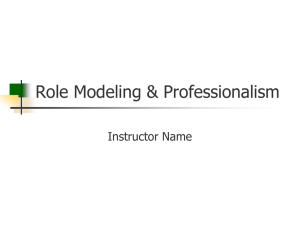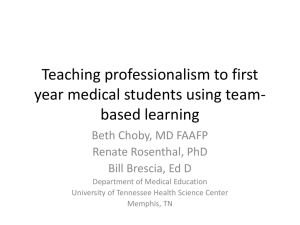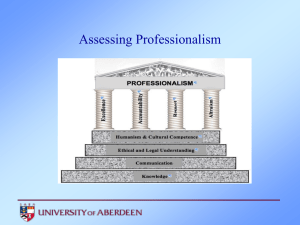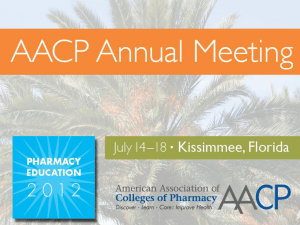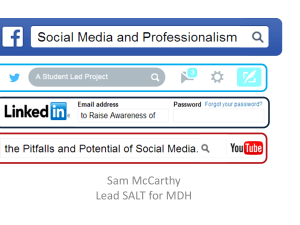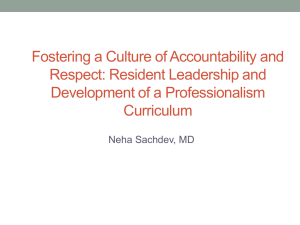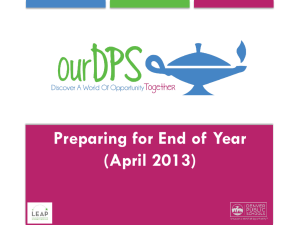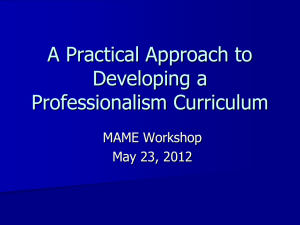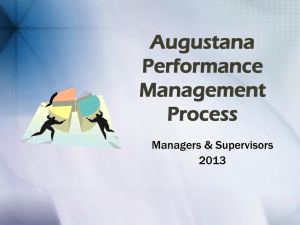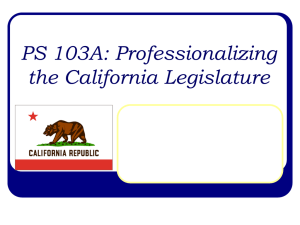Tracking Clinical Case Logs and Professionalism in
advertisement
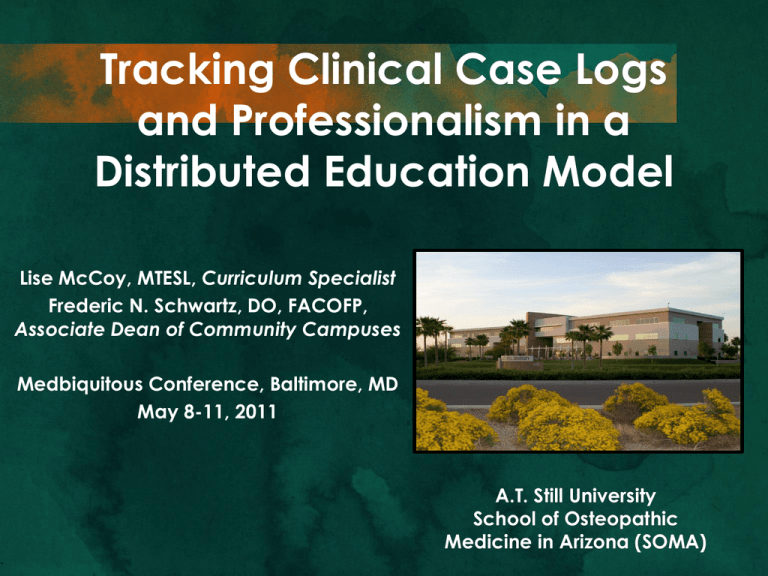
Tracking Clinical Case Logs and Professionalism in a Distributed Education Model Lise McCoy, MTESL, Curriculum Specialist Frederic N. Schwartz, DO, FACOFP, Associate Dean of Community Campuses Medbiquitous Conference, Baltimore, MD May 8-11, 2011 A.T. Still University School of Osteopathic Medicine in Arizona (SOMA) Significance To evaluate student electronic case logs and evaluations for our unique, distributed program model. Curricular goals included encouraging diligence in clinical case logging and monitoring student professionalism during rotations. Accreditation standards require review of clerkship requirements Standard 6.13 The COM must develop a process that evaluates the clerkship in regards to meeting the COM's mission and objectives. The COM should hold the affiliated or educational site to its established goals and objectives, and conduct routine, periodic visits to ensure the goals and objectives are being met. (Committee on Osteopathic College Accreditation, 2011). Background • Completing documentation such as case logs is a mark of conscientiousness, a trait linked to professionalism. (Summarized from McLachlan, Finn, and Sawdon 2010) • Reviewing clinical case logs improves accountability and oversight with regard to student clinical experiences (Spickard, et al. 2008) How does a lack of professionalism impact a physician’s career? • Unprofessional behavior in medical school has been correlated with later state medical board actions. (Papadakis et al, 2005) • Medical Board of Examiner infractions include lack of proper documentation (Ainsworth and Szauter, 2006) • To emphasize the importance of professionalism, SOMA will tie the case log requirement to a professionalism score, which is reported in the student’s Medical School Performance Evaluation (MSPE). Study Methods • MS3-MS4 students were required to log all patient encounters (diagnoses and procedures) electronically. • Case log data were collected from the SOMA E*Value database. • Authors compared records for 95 MS3 (2012) and 97 MS3 (2011) • Using the same database, authors analyzed the student annual average professionalism score from end-ofrotation evaluations. • Study Question: Will there be a correlation between case log quantities and professionalism scores, as rated by preceptors? Distributed Education Model SOMA trains students years 2-4 at eleven regional community campuses, affiliated with National Association of Community Health Centers. MS3-4, Students study at more than 500 sites. Sample Procedure Logs, One MS4 Student Students Log Procedures and Diagnoses Electronically Results – Average Scores SOMA Class MS3 (2012) n=95 July 2010March 2011 Average number of cases logged per student (annual) Average Number of Cases Logged per Student Each Rotation Average Student Professionalism Score (Out of 5.0) 787 87 4.77 p<0.265 r=0.115 Degrees of freedom =94 122 4.72 p<.01 r=0.264 Degrees of freedom =95 Total case log n=74,724 Correlation of case log quantity and Professionalism (9 rotations) MS3 (2011) n=97 August 2009June 2010 (11 rotations) 1339 Total case log n=129,919 Results: Regional Variation – Patient Encounters Results – Regional Variation - Professionalism Average Average score = score 4.72= 4.72 out of maximum of 5 Professionalism Items - CPE Concluding Remarks • Although literature shows that conscientiousness is linked to professionalism1, we did not find a correlation between professionalism scores and quantity of case logs submitted. • This validates the need to collect preceptor perceptions of student professionalism. • Electronic case logs have been successfully integrated into our program. • The next goal will be to certify certain skills. 1 McLachlan, 2010. Individual Summary Report References • • • • • • • • • • • • • • • AAFP. What about the Medical School Performance Evaluation (MSPE)? 2011. Retrieved from http://www.aafp.org/online/en/home/publications/otherpubs/strolling/prep/mspe.html Advanced Informatics, E*Value. 2010. https://www.e-value.net/index.cfm Ainsworth, M. & Szauter, K. Medical Student Professionalism: Are We Measuring the Right Behaviors? A Comparison of Professional Lapses by Students and Physicians. Academic Medicine, 2006 October. (Vol. 81 (10).) Committee on Osteopathic College Accreditation (COCA). Curriculum Standard Six. 2011. Liaison Committee for Medical Education (LCME). Functions and Structure of a Medical School. Standards for Accreditation of Medical Education Programs Leading to the M.D. Degree. June, 2010 Maudsley, G. & Strivens, J. Promoting Professional Knowledge, Experiential Learning and Critical Thinking for Medical Students. Medical Education, 2000. (Vol. 34: 535-544.) Makoul, G. et al. The Use of Electronic Medical Records: Communication Patterns in Outpatient Encounters. Journal of the American Medical Informatics Association, 2001. (Vol. 8:6). National Association for Community Health Centers (NACHC). McLachlin, J. Measuring Conscientiousness and Professionalism in Undergraduate Medical Students. Clinical Teacher, 2010 (Mar 7(1): 37-40. McLachlin, J. , Finn, G. and Sawdon, M. The Relationship between Conscientiousness and Professionalism. Association for the Study of Medical Education (ASME) Annual Scientific Meeting, 2010. Scientific Meeting 2010 Robinson College, Cambridge, UK, 21-23 Jul 2010. Papadakis, M. et al. Disciplinary Action by Medical Boards and Prior Behavior in Medical School. New England Journal of Medicine, 2005. (353:25). Spickard , A. Automatic Capture of Student Notes to Augment Mentor Feedback and Student Performance on Patient Write-Ups. Journal of Internal Medicine. 2008 Jul; 23(7): 979-84. Speedie, S. et al. PDA Support for Outpatient Clinical Clerkships: Mobile Computing for Medical Education. AMIA, Inc. 106-5027. 2001 West, A. and Nierenberg D. Student Experiences with Competency Domains During a Psychiatry Clerkship. Academic Psychiatry 2009; (33:204-211). School of Osteopathic Medicine in Arizona (SOMA). Clinical Performance Evaluation. 2010.


